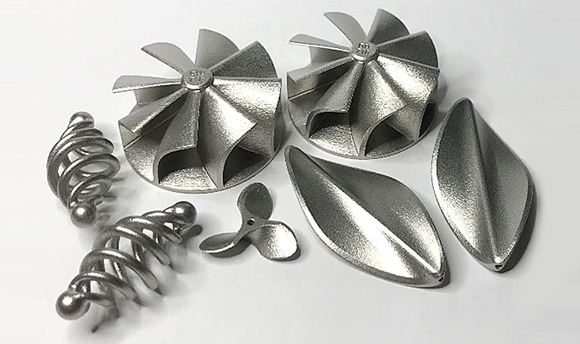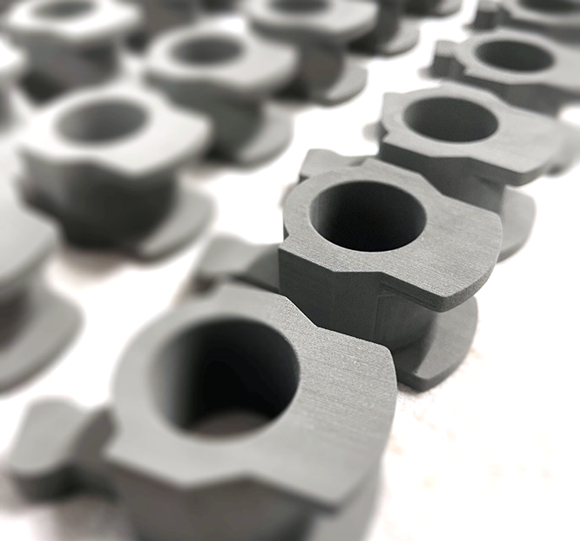Digital Metal adds low-alloy steel and superalloy to range of BJT materials
November 17, 2021

Digital Metal, part of Sweden’s Höganäs Group, has added DM 4140 low-alloy steel and DM 718 nickel-chromium-based superalloy to the range of materials that can be processed on its Binder Jetting (BJT) system. Other materials in the range already include pure copper DM Cu, stainless steel 316L and 17-4PH, tool steel DM D2, superalloys DM 625 (equivalent to Inconel 625) and DM 247 (equivalent to MAR M247), and Titanium Ti6Al4V.
DM 4140, a low-alloy steel powder, was developed within Hyundai Motors in order to manufacture gearbox Control Fingers using BJT. By adding carbon steel to its BJT technology, Digital Metal is said to have expanded its offer of tool-free design freedom, shortened lead times, and potential weight savings.

The material is additively manufactured with an ink that is commonly used for other steel and nickel-base alloys, although the process has been modified to reach properties that are consistent with MIM standards (ISO22068). By alternatively applying quenching and subsequent tempering treatment in an as-sintered state, tensile properties may be tuned toward application requirements.
Low-alloy steel components, manufactured with Metal Injection Moulding (MIM), have been used in general engineering and automotive manufacturing since the early 1980s. Its strength, toughness, and resistance to deformation during quenching are said to have made DM 4140 a popular grade.
DM 4140 is well suited to producing components exposed to high loads, such as gear wheels, connecting rods, fasteners, couplings, gears, belt pulleys and shafts. With adjustment to curing conditions, DM 4140 is also available as a turnkey solution for customers who already have Digital Metal systems processing other steels and superalloys.
DM 718 is a nickel-chromium-based precipitation-hardening superalloy, reportedly equivalent to UNS N07718 (Inconel® alloy 718). It is said to offer high strength, as well as creep and corrosion resistance, in cryogenic and elevated temperatures (up to about 650°C). This alloy composition is thought to be the most used nickel-chromium superalloy in metal AM, in addition to being one of the most commonly used superalloys overall.
The material properties of DM 718 are reported to be satisfactory in the as-sintered state; however, post-sintering heat treatments are required to take full advantage of its composition. The alloy can be strengthened using industry-standard treatments, consisting of solution annealing and quenching, followed by ageing steps
Compared with some other superalloys that have similar high-temperature strength characteristics, a key benefit of alloy 718 is said to be its welding behaviour – particularly its resistance to post-weld cracking. The alloy has a slow response to age-hardening and is primarily strengthened by gamma double prime (γ’’) precipitates.
This combination is said to offer improved weldability over high gamma prime (γ’) alloys, such as DM 247 – however, the γ’’ phase begins to dissolve at temperatures above 650°C, meaning the material then loses some of its strength. Meanwhile, the γ’ phase reportedly remains stable and continue to provide strength to slightly higher temperatures. Though, in general, alloys with high levels of γ’ cannot be welded.
Digital Metal will begin offering print services for DM 718 components in the as-sintered state, as well as collaborating with external partners to offer components in various other heat-treated states, in the fourth quarter of 2021. This alloy is also available as a turnkey solution (including consumables and process parameters), for customers who are already using Digital Metal’s systems to process other steels and superalloys.
















